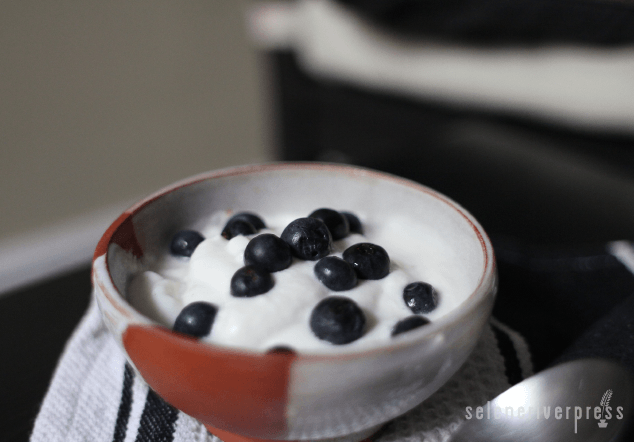Ask some people how to bring more culture into their life, and I’m willing to bet there’ll be mention of plays, operas, and poetry. Ask them how to get more culture in their diet, and I guarantee they’ll talk about digestion, bacteria, and…grandmas.
Wait. What? Why grandmas? Because more than likely, those well-versed in the age-old skill of culturing (or fermenting) were taught by their grandmothers. This method of food preparation has been around for generations, but it faded when we conveniently started finding a plethora of goods at our local market. Now it just might be making a comeback—much to the benefit of optimal health.
What makes cultured foods so blasted good for us? The culturing process creates the “good” bacteria our guts so desperately need to properly digest the foods we eat, while giving our bodies the nutrition it needs. Good bacteria = good digestion. Told ya so. The subject of good bacteria in our guts is a big one. It deserves a post all to itself, so I won’t go into all of that right now. Just trust me—a healthy gut is key to all good things in your life.
Don’t want to wait? Self-health educate yourself with Gut and Psychology Syndrome by Dr. Natasha Campbell-McBride, MD. And don’t forget the perfect companion: The Heal Your Gut Cookbook by Hilary Boynton and Mary G. Brackett. You won’t be disappointed.
Back to the subject at hand: bringing more culture into your life. You can culture all kinds of foods, but a super easy starting point is dairy. Most people on the planet are familiar with yogurt, buttermilk, and sour cream. Believe it or not, you don’t have to run to the supermarket each time one of these staples appears in a recipe you want to try. You can make your own with just a few key ingredients and no fancy equipment. With each spoonful, you’ll bring more and more culture into your life.
You’ll find all kinds of recipes in Monica Corrado’s uncomplicated book With Love From Grandmother’s Kitchen: Traditional Cooking Techniques for Well-Being, but I tried the homemade yogurt first, using cultured raw milk in a thermos. All you need is the best quality milk you can get your hands on (preferably raw and from pasture-raised cows), a couple tablespoons of good quality plain yogurt (or yogurt starter), a saucepan, measuring spoons, thermometer, and a thermos. You probably have a lot of these things around most of the time.
Once you’ve gathered these items, simply warm the milk in the saucepan over low heat to no higher than 110°F. This preserves the proteins and enzymes in the milk. Pour the warmed milk into the thermos, stir in a couple tablespoons of plain yogurt, put the lid on, and let it sit on the counter while you sleep. The next morning you’ll have fresh yogurt for breakfast. Delicious!
If you prefer a fruity yogurt, all you have to do is puree your favorite fruit of the season and stir it in. It doesn’t take much effort, and it’s so much better for you than anything the store has to offer.
Didn’t have an older relative who shared the ways of culturing foods and not sure where to even begin? Neither did I, but have no fear! A few of the authors here at SRP have you covered. Besides the titles mentioned above, consider the following:
Udderly Cultured: The Art of Milk Fermentation by Phyllis Quinn. Filled with wisdom, stories, and recipes, Chef Phyllis teaches you everything you need to know about using raw milk to bring more culture into your diet.
Don’t have access to raw milk and not sure what the best alternatives might be? The Weston A. Price Foundation Shopping Guide can help you maneuver through every trip to the market.
Want to use the culturing process for something other than dairy? The Art of Fermentation by Sandor Ellix Katz is a comprehensive tome on culturing most anything else you can think of.



